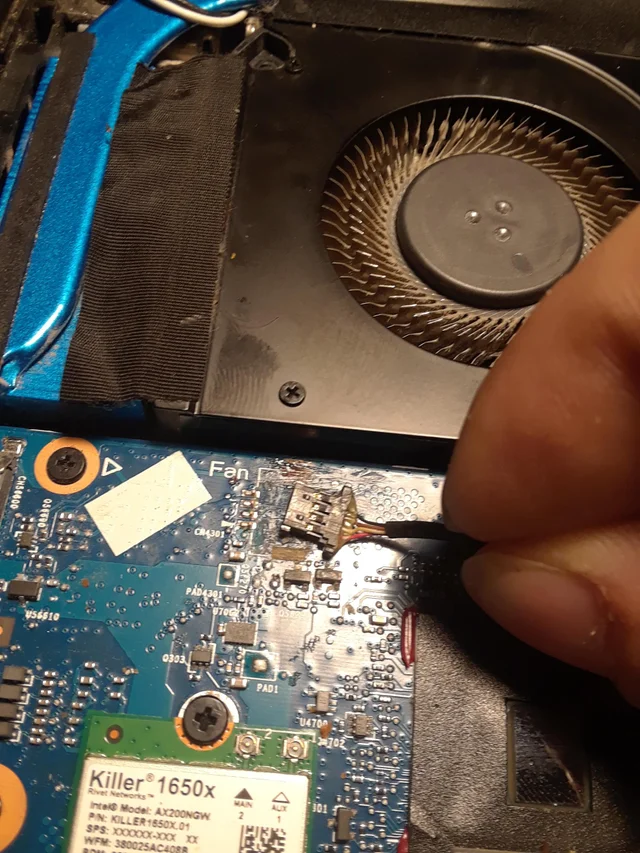Every laptop is assembled from the factory with a fan.
A fan is regarded as the primary method of cooling system components, and also vital to the effective operation of equipment in the laptop.
Depending on the build of the laptop, the cooling fans come in distinct designs, which determine its cooling efficiency, and noise generated.
Some laptops have in-built software, which enables users to tweak the operating speed, set up custom profiles for divergent use cases.
A thin laptop would require the fans to revolve at a much higher speed, to push the hot air out quickly enough to prevent overheating.
A bulkier laptop, however, would not require its fans to spin at similar speeds to the thin laptop.
But at a slower rate, since its design allows for a much higher temperature threshold, before its cooled.
We would not advise users to disable their fans, but in this article, we would show you how to turn off laptop fan, if it is necessary.
How To Disable Laptop Fan in HP, Acer, Dell, MSI and Lenovo Laptops
Remove Motherboard Wire. [Works for HP, Dell, Acer, MSI and Lenovo ]

The process of unplugging the fan from the motherboard is the best way to ensure your cooling fans are completely disabled.
However, if you choose this method, laptop owners need some technical know-how and a toolkit to disassemble the laptop. The following is the step-by-step guideline to doing so:
- Get a fibre cloth and lay it on a flat surface.
- lay the laptop on the cloth bottom side up.
- Unscrew the bottom case.
- Disconnect laptop battery(to prevent some components with a residual charge from electrocuting you).
- Search for a multi-coloured cable from the fan to the motherboard, and disconnect the cable(care must be taken since the connection pins are quite fragile).
- Connect your battery and close your case.
- Boot your computer.
Disable Laptop Fan in BIOS
The term BIOS means basic input/output system, and its main use is to act as a bridge between hardware and the operating systems. There are two main methods to access your BIOS. They are:
METHOD 1
- Start-up your laptop
- Press the prompted key on your screen. Some laptops use different keys to enter the BIOS but the most common keys are F1, F2, F10, or ESC keys.
- In the BIOS, select the Advanced tab.
- Select Smart Fan Configuration in the menu
- Set the fans to disabled.
- Save the configuration and reboot.
METHOD 2
- Press the Windows button on your keyboard to open the start menu, and click the settings icon.
- Click Windows Update & Security within settings.
- Select recovery in the menu.
- Press the restart now button under Advanced start-up.
- Select troubleshoot.
- Click Advanced options.
- Finally, click UEFI firmware settings, and restart.
- In the BIOS, select the Advanced tab.
- Select Smart Fan Configuration in the menu
- Set the fans to disabled.
- Save the configuration and reboot.
Processor Management Option [Works for HP, Dell, Acer, MSI and Lenovo]
- Open your start menu, and type edit power plan, and select
- Click advanced power settings on the page
- Within the Power options menu, scroll down and select processor power management.
- Change system cooling policy from active to passive.
- Apply and reboot.
3rd Party software [Works for HP, Dell, Acer, MSI and Lenovo]
Another option is to download 3rd party software, which allows you to modify the fan control.
Applications such as; Speedfan, MSI afterburner and Gigabyte EasyTune can allow users to make whatsoever changes they desire.
Why is my Laptop Fan Always Running?
Aggressive fan settings. Some laptops come with active cooling from the factory, whether applications are running in the background or foreground.
It is however possible to change fan configurations to operate aggressively under specific conditions.
Overheating. Apart from the CPU and GPU other components such as the RAM, HARD-DRIVE and motherboard produce heat when the laptop is in use.
A cooling fan is not only designated to the CPU and GPU but other equipment on the motherboard which produces heat after longer periods of use.
Running intensive applications. A cooling fan would not run if no applications are running in the background.
If your CPU or GPU is under load, the Operating System tells the Fans to activate, thereby increasing the noise generated and the rate at which the fans are revolving, to cool down all the necessary components.
How Long Can My Laptop Run Without a Fan?
Computers were built from scratch with the inclusion of the fan, so removing the fan from the computer would drastically reduce the life span of the PC and its internal components.
Computers operate at an excess of 85 – 100 Degrees Celsius, and if the laptop continues to run heavy loads with these temps, the device could catch fire.
So to keep your computer running efficiently for a long time, the fan is an absolute requirement.
Final Thoughts
A cooling fan is an outstanding piece of equipment in most laptops and computers, because of its ability to guarantee a long life span of PCs.
Laptop fans need to be cleaned frequently to set the seal on its efficiency, and performance.
That’s it on how to turn off your laptop fan.
